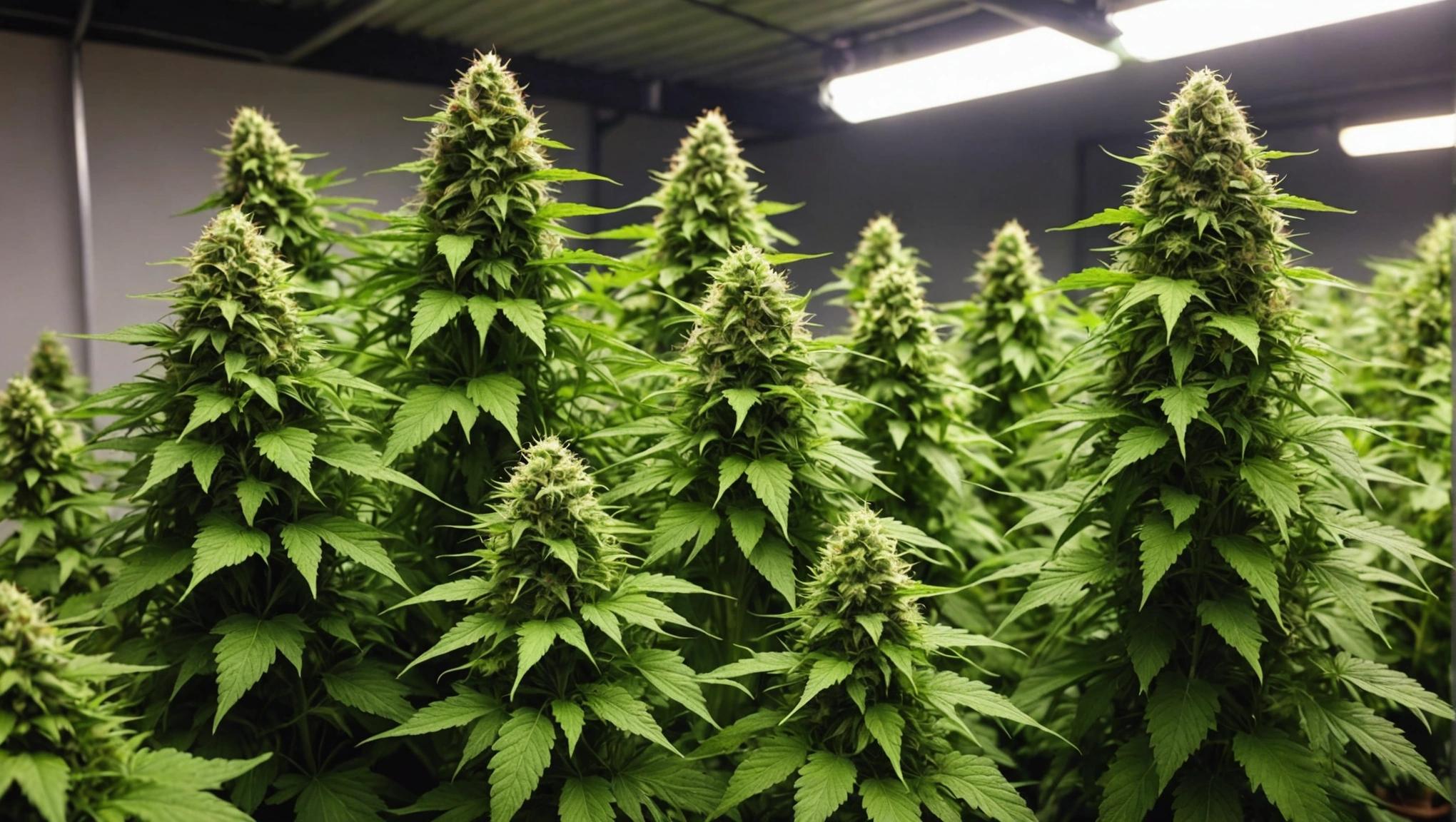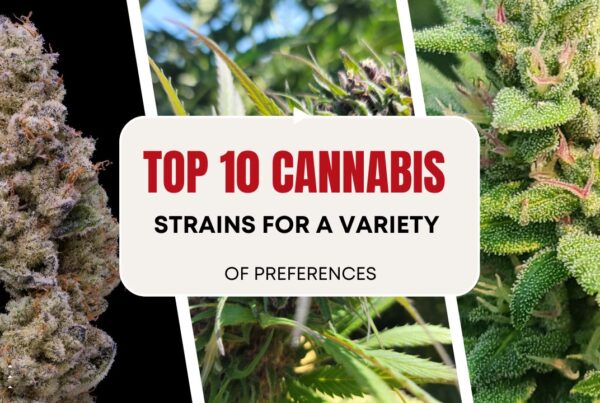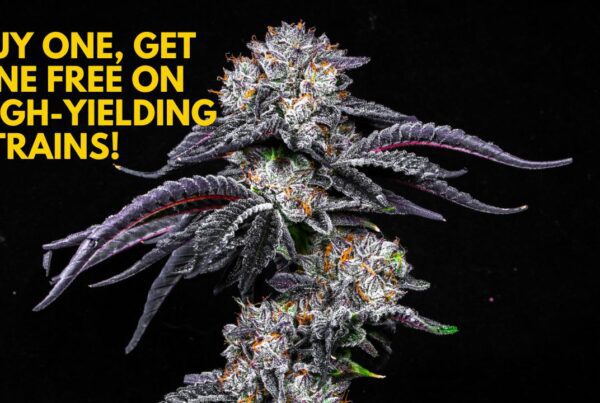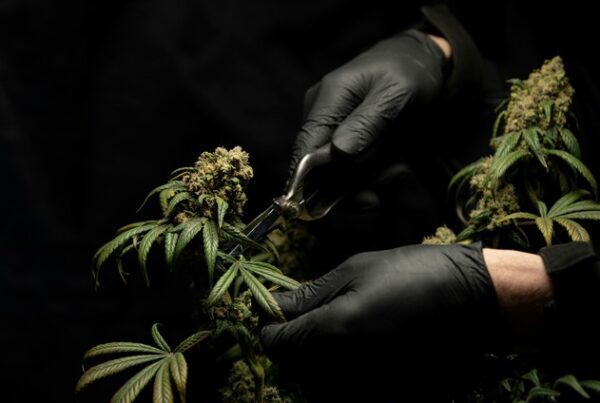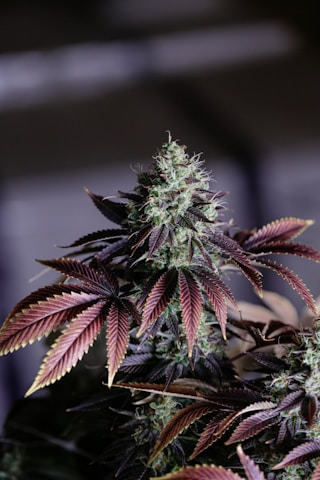Best Autoflowering Seeds for Humid and Hot Climates

When it comes to cultivating cannabis in humid and hot conditions, selecting the right autoflowering seeds is crucial for a successful harvest. In regions with high humidity and warm temperatures, certain cannabis strains thrive better than others, offering resilience and high yields. In this guide, we will explore the best weed strains specifically tailored for humid and hot climates. Understanding the importance of autoflowering seeds in such environments is fundamental for both novice and experienced growers looking to optimize their cultivation efforts. Join us as we delve into the world of cannabis cultivation in humid hot conditions and discover the top autoflowering seeds that can withstand these challenging environmental factors.
Importance of Choosing the Right Seeds
Benefits of Autoflowering Seeds
- Quick Harvest: Autoflowering seeds have a faster growth cycle, allowing for quicker harvests compared to photoperiod seeds. This can be advantageous for growers looking to have multiple harvests in a single growing season or those who prefer a shorter overall cultivation time.
- Resilient to Light Leaks: Autoflowering seeds are less sensitive to light leaks, making them ideal for indoor growing where light control may be a challenge. This resilience can help maintain consistent light schedules and prevent interruptions in the flowering process.
- Suitable for Beginners: These seeds are easier to grow and require less maintenance, making them perfect for novice growers. The forgiving nature of autoflowering seeds can provide new cultivators with a more forgiving experience, allowing them to learn and improve their skills with less risk of failure.
Factors to Consider when Selecting Seeds for Hot Humid Environments
- Resistance to Mold and Pests: Choose seeds that are known to be resistant to common issues in hot humid climates, such as mold and pests. Opting for seeds with natural defenses against these threats can help mitigate potential crop losses and reduce the need for harsh chemical treatments.
- Heat Tolerance: Look for seeds that can thrive in high temperatures without wilting or experiencing heat stress. Heat-tolerant seeds are essential for maintaining plant health and ensuring optimal growth, especially during the peak of summer heat waves.
- High Humidity Adaptability: Opt for seeds that can handle high humidity levels without succumbing to mold or rot. Proper humidity management is crucial in preventing fungal diseases and ensuring the overall well-being of the plants, making humidity-adaptive seeds a valuable choice for humid environments.
Selecting the right seeds is crucial for a successful harvest, especially in challenging environments like hot and humid conditions. By considering the benefits of autoflowering seeds and the factors specific to your growing environment, you can set yourself up for a bountiful and stress-free cultivation experience. Remember to research and choose seeds that align with your cultivation goals and environmental conditions to optimize your yield and overall growing experience.
Best Weed Strains for Humid Hot Conditions
In regions with hot and humid climates, selecting the right cannabis strains can make a significant difference in the success of your grow operation. The heat and moisture levels in such environments can pose challenges, but certain varieties are better equipped to thrive under these conditions. Let’s delve into the top weed strains that are well-suited for humid hot climates and explore the key characteristics that make them ideal choices.
Exploring Top Varieties Suitable for Hot Humid Climates
Tropical Sativas
These strains are known for their resilience in tropical climates. With genetics originating from regions with high humidity and warm temperatures, tropical Sativas often exhibit vigorous growth and can withstand the challenges posed by hot and humid conditions. Varieties like Panama Red and Acapulco Gold are popular choices among growers in such environments.
Mold-Resistant Indicas
In humid conditions, the risk of mold development on cannabis plants is higher. Opting for mold-resistant indica strains can help mitigate this issue. Varieties such as Northern Lights and Hindu Kush not only offer excellent mold resistance but also thrive in hot climates, making them well-suited for regions with high humidity.
Characteristics of Ideal Strains for Such Environments
High Heat Tolerance
When selecting weed strains for hot and humid conditions, prioritizing varieties with high heat tolerance is crucial. Look for strains that can thrive in elevated temperatures without experiencing heat stress, ensuring robust growth throughout the growing season.
Mold and Mildew Resistance
Given the increased risk of mold and mildew in humid environments, choosing strains with natural resistance to these issues is essential. Mold-resistant varieties are better equipped to combat fungal growth, safeguarding your plants against common threats in hot and humid climates.
Strong Pest Resistance
Insects and pests are often more abundant in humid regions, posing a threat to cannabis crops. Opt for strains that exhibit strong pest resistance to minimize the risk of infestations. By selecting pest-resistant varieties, you can maintain the health of your plants and reduce the need for extensive pest control measures.
Adaptability to Environmental Changes
Hot and humid conditions can be unpredictable, with weather patterns fluctuating throughout the growing season. Choose weed strains that demonstrate adaptability to environmental changes, allowing them to thrive despite variations in temperature and humidity levels.
By selecting the right weed strains tailored to hot and humid climates, growers can optimize their cultivation efforts and maximize the yield of high-quality cannabis. Understanding the unique characteristics of each strain and its compatibility with specific environmental conditions is key to achieving successful harvests in regions with challenging weather patterns.
Cultivation Techniques
Optimal Growing Practices in Humid Hot Regions
When it comes to cultivating plants in humid hot regions, it is crucial to understand the optimal growing practices to ensure successful growth. In this blog section, we will explore the key techniques and strategies for cultivating crops in such challenging environments. We will delve into the challenges faced by farmers in humid hot regions and provide effective solutions to overcome them. By implementing the right cultivation techniques, farmers can maximize their yields and ensure sustainable agriculture in these regions.
Humid hot regions present unique challenges for farmers due to high temperatures and moisture levels. To navigate these conditions successfully, farmers need to adopt specific cultivation techniques tailored to these environments. One of the critical aspects of cultivation in humid hot regions is proper water management. Excessive moisture can lead to various plant diseases, so implementing efficient irrigation systems and drainage solutions is essential.
Furthermore, selecting the right crop varieties that are well-adapted to humid hot conditions is paramount. Heat-tolerant crops such as okra, sweet potatoes, and certain varieties of tomatoes thrive in these regions. Understanding the soil quality and composition is also crucial for successful cultivation. Conducting soil tests and amending the soil with organic matter can improve its fertility and water retention capacity.
In addition to water and soil management, controlling pests and diseases is a significant challenge in humid hot regions. Integrated pest management strategies, including the use of beneficial insects and organic pesticides, can help mitigate pest infestations without harming the environment.
To combat diseases, practicing crop rotation, maintaining proper plant spacing, and promoting good airflow around the plants can reduce the risk of fungal and bacterial infections. It is also essential to monitor the plants regularly for any signs of disease and take prompt action to prevent their spread.
By implementing these cultivation techniques and staying informed about the latest innovations in agriculture, farmers in humid hot regions can overcome the challenges they face and achieve sustainable growth and productivity in their fields.
Moreover, creating microclimates within the cultivation area can provide additional benefits. Techniques such as shading, mulching, and windbreaks can help regulate temperature and moisture levels, creating a more favorable environment for plant growth.
Integrating sustainable practices like water conservation methods, such as drip irrigation or rainwater harvesting, can also contribute to long-term success in cultivation. These methods not only help conserve water resources but also promote efficient water usage, reducing the overall environmental impact of farming activities.
Furthermore, investing in modern technology and precision agriculture tools can enhance productivity and resource management. Tools like soil moisture sensors, weather monitoring systems, and drone technology can provide valuable insights for optimizing crop growth and detecting potential issues early on.
Successful cultivation in humid hot regions requires a combination of knowledge, adaptation, and innovation. By implementing a holistic approach that addresses water management, soil health, pest control, and technology integration, farmers can overcome the challenges posed by such environments and achieve sustainable growth in their agricultural practices.
Managing Humidity and Temperature
Controlling Humidity Levels for Healthy Plant Development
Maintaining the proper humidity levels is crucial for ensuring the healthy growth of plants. High humidity can lead to issues such as mold, mildew, and certain plant diseases, while low humidity can cause dehydration and hinder photosynthesis. To control humidity effectively, consider the following strategies:.
- Monitor Humidity Levels: Invest in a hygrometer to keep track of humidity levels in your growing environment. Different plants have varying humidity requirements, so it’s essential to tailor the levels to suit the specific needs of your plants.
- Use Proper Ventilation: Good air circulation is key to preventing humidity buildup. Ensure that there is adequate ventilation in your growing area to promote airflow and reduce stagnant, humid conditions.
- Employ Dehumidifiers or Humidifiers: Depending on whether you need to increase or decrease humidity levels, consider using dehumidifiers or humidifiers to maintain the ideal conditions for plant growth.
- Watering Practices: Be mindful of your watering routine, as overwatering can lead to excess humidity. Water your plants in the morning to allow excess moisture to evaporate throughout the day.
Strategies to Combat High Temperatures
As temperatures rise, plants can face heat stress, which negatively impacts their growth and overall health. To combat high temperatures effectively, implement the following strategies:.
- Shade Cloth: Install shade cloth over your plants to provide them with relief from direct sunlight and reduce the overall temperature in the growing area.
- Mulching: Apply a layer of mulch around your plants to help retain soil moisture and regulate soil temperature. This can prevent the roots from overheating during hot weather.
- Watering Schedule: Adjust your watering schedule to water plants during the cooler parts of the day, such as early morning or late evening, to prevent water loss through evaporation and ensure optimal hydration.
- Cooling Systems: Consider installing cooling systems, such as fans or misting systems, to lower the temperature in your growing environment and create a more comfortable space for your plants.
By managing humidity levels and temperature effectively, you can create an optimal growing environment for your plants, promoting healthy development and robust growth.
Harvesting and Drying
Determining the Right Time for Harvesting in Hot Humid Climates
Proper Drying Techniques to Preserve Flavor and Potency
Harvesting in Hot Humid Climates:
- Understanding the Impact of Climate on Harvest Time
- Signs to Look for to Ensure the Best Time for Harvest
- Importance of Timing in Relation to Climate Conditions
Proper Drying Techniques:
- Importance of Proper Drying in Preserving Flavor and Potency
- Different Drying Methods and Their Impact on Quality
- Tips for Drying Cannabis to Achieve Desired Results
Enhancing Flavor and Potency Through Drying:
- Factors Affecting Flavor and Potency During Drying
- How to Control Drying Conditions for Optimal Results
- Achieving the Perfect Balance Between Flavor and Potency
The process of harvesting and drying cannabis is a critical stage that significantly impacts the final quality of the product. In hot and humid climates, growers face unique challenges that require careful consideration to ensure a successful harvest. Understanding the environmental factors affecting cannabis growth and the specific signs indicating optimal harvest time is essential for maximizing the plant’s potential.
When it comes to drying cannabis, proper techniques are key to preserving its flavor and potency. Different drying methods, such as air drying, using a dehydrator, or hanging the plants, can influence the final quality of the product. Growers should pay attention to factors like temperature, humidity, and airflow to create optimal drying conditions. By controlling these variables, growers can enhance the flavor profile and potency of their cannabis strains.
To achieve the best results, it’s crucial to strike a balance between flavor and potency during the drying process. Factors like the duration of drying, the amount of airflow, and the overall environment play a significant role in determining the final product’s characteristics. By experimenting with different drying techniques and monitoring the process closely, growers can fine-tune their methods to produce high-quality cannabis with the desired flavor and potency.
Mastering the art of harvesting and drying cannabis is essential for growers looking to deliver top-quality products to consumers. By paying attention to the unique challenges posed by hot and humid climates and implementing proper drying techniques, growers can elevate the overall experience for cannabis enthusiasts. Through careful consideration and attention to detail, growers can unlock the full potential of their cannabis crops and produce exceptional products that stand out in the market.
Pest and Disease Management
Common Pests and Diseases in Hot Humid Environments
Hot and humid environments create the perfect breeding grounds for a variety of pests and diseases that can wreak havoc on your plants. In such conditions, common pests like aphids, spider mites, and caterpillars thrive, while diseases such as powdery mildew, downy mildew, and fungal leaf spots can rapidly spread among your garden plants. Identifying these pests and diseases early on is crucial in preventing widespread damage.
Effective Preventive Measures for Pest and Disease Management
When it comes to managing pests and diseases in your garden, prevention plays a vital role. Implementing proactive strategies can help safeguard your plants. Some effective preventive measures include maintaining proper plant spacing to improve air circulation, regularly inspecting your plants for early signs of infestation or disease, encouraging the presence of beneficial insects like ladybugs and lacewings, and ensuring the soil is well-draining and rich in nutrients to promote plant health and resilience.
Natural and Organic Remedies for Pest and Disease Control
Embracing natural and organic remedies is not only beneficial for your garden but also for the environment. Instead of relying on harsh chemicals, consider using eco-friendly alternatives. Homemade insecticidal soaps, neem oil sprays, and garlic-pepper teas are effective against many common pests. Additionally, practices like companion planting, where mutually beneficial plant species are grown together, and crop rotation, which disrupts pest life cycles, can help control infestations organically.
Importance of Early Detection and Intervention
Early detection of pests and diseases is key to successful pest management. Regularly monitoring your plants for any abnormalities, such as yellowing leaves, distorted growth, or unusual spots, can help you intervene promptly before the issue escalates. By addressing problems early on, you can prevent the spread of pests and diseases, ultimately preserving the health and productivity of your garden.
Conclusion
In hot and humid environments, staying vigilant against pests and diseases is essential for maintaining a thriving garden. By combining preventive measures, organic remedies, and early intervention strategies, you can effectively manage these challenges while promoting a healthy and sustainable gardening ecosystem.
Community Insights and Expert Tips
- Harnessing the Power of Similar Climates: Growers’ Stories
- Sowing Success in Hot and Humid Conditions: Expert Strategies
When it comes to navigating the challenges of agriculture, especially in regions with hot and humid climates, insights from fellow growers who have faced similar conditions can be invaluable. By tapping into the experiences of those who have first-hand knowledge of working in comparable environments, a wealth of practical wisdom can be unearthed.
In the realm of agriculture, every climate presents its own set of obstacles and opportunities. Growers operating in similar climates often encounter common challenges, such as pest management, irrigation techniques, and crop selection. By delving into the experiences of these individuals, one can gain a deeper understanding of the strategies and practices that have proven successful in mitigating these challenges.
Moreover, expert advice tailored to hot and humid conditions can offer crucial insights for maximizing yields. From selecting heat-tolerant crop varieties to implementing effective water management practices, there are various techniques that can help farmers thrive in such environments. By drawing on the expertise of seasoned professionals who specialize in hot and humid climates, growers can enhance their knowledge and optimize their agricultural practices.
The fusion of community insights and expert tips creates a rich tapestry of knowledge that can benefit growers operating in hot and humid conditions. By learning from the experiences of others and incorporating expert advice into their own practices, farmers can cultivate resilience, adaptability, and ultimately, success in challenging agricultural landscapes.
- Building Resilience through Sustainable Practices
In addition to learning from others and seeking expert advice, implementing sustainable practices can further enhance the resilience of farmers in hot and humid climates. Sustainable agriculture not only promotes environmental stewardship but also contributes to long-term farm viability. Techniques such as crop rotation, integrated pest management, and soil conservation not only benefit the land but also help farmers adapt to changing climatic conditions.
- Leveraging Technology for Precision Agriculture
The advent of technology has revolutionized modern agriculture, offering innovative solutions to age-old challenges. In hot and humid climates, precision agriculture technologies can play a crucial role in optimizing resource use and maximizing yields. Tools such as drones for aerial imaging, moisture sensors for efficient irrigation, and data analytics for informed decision-making are transforming the way farmers operate in challenging environments.
By embracing sustainable practices, incorporating technological advancements, and leveraging the collective wisdom of the agricultural community and experts, growers in hot and humid climates can position themselves for success in the face of adversity. The intersection of traditional knowledge, modern innovation, and a supportive network creates a fertile ground for growth and prosperity in agriculture.
Best Weed to Grow in Humid Hot Conditions Seeds Autoflower
Growing cannabis in humid hot conditions presents unique challenges for cultivators. Selecting the right autoflowering seeds suited for such environments is crucial to ensuring a successful and fruitful harvest. This guide explores the best weed strains to grow in humid hot conditions and provides insights into cultivating cannabis in challenging climates.
Top Autoflowering Seeds for Humid Hot Conditions.
- Strain A : Known for its resilience to high humidity and heat, making it ideal for hot and humid climates.
- Strain B : Offers a unique blend of flavors and aromas while thriving in humid conditions, producing high-quality buds.
- Strain C : A popular choice among growers in hot and humid regions due to its fast growth and mold resistance.
Cultivation Tips.
- Watering : Monitor moisture levels closely to prevent overwatering in the humid environment.
- Ventilation : Ensure proper airflow to reduce humidity levels and prevent mold growth.
- Shading : Provide adequate shading to protect plants from excessive heat and sun exposure.
Selecting autoflowering seeds suited for humid hot conditions is essential for a successful harvest. By choosing the right strain that thrives in such environments, growers can ensure a bountiful yield while minimizing potential issues related to excessive humidity and heat. With proper care and attention to the specific needs of the chosen autoflowering strain, cultivating cannabis in humid hot conditions can be a rewarding experience for any grower.

